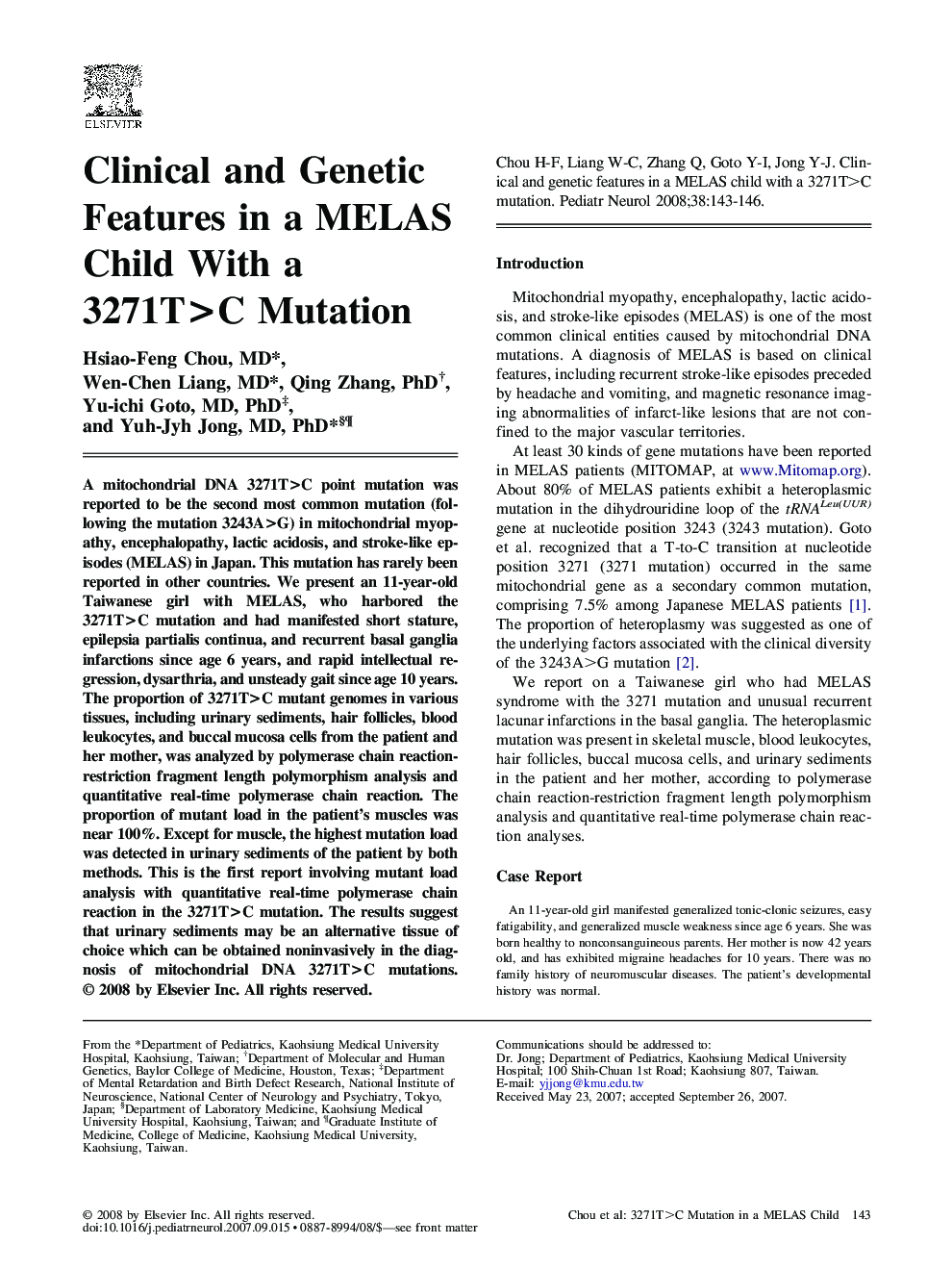| کد مقاله | کد نشریه | سال انتشار | مقاله انگلیسی | نسخه تمام متن |
|---|---|---|---|---|
| 3086682 | 1189876 | 2008 | 4 صفحه PDF | دانلود رایگان |

A mitochondrial DNA 3271T>C point mutation was reported to be the second most common mutation (following the mutation 3243A>G) in mitochondrial myopathy, encephalopathy, lactic acidosis, and stroke-like episodes (MELAS) in Japan. This mutation has rarely been reported in other countries. We present an 11-year-old Taiwanese girl with MELAS, who harbored the 3271T>C mutation and had manifested short stature, epilepsia partialis continua, and recurrent basal ganglia infarctions since age 6 years, and rapid intellectual regression, dysarthria, and unsteady gait since age 10 years. The proportion of 3271T>C mutant genomes in various tissues, including urinary sediments, hair follicles, blood leukocytes, and buccal mucosa cells from the patient and her mother, was analyzed by polymerase chain reaction-restriction fragment length polymorphism analysis and quantitative real-time polymerase chain reaction. The proportion of mutant load in the patient’s muscles was near 100%. Except for muscle, the highest mutation load was detected in urinary sediments of the patient by both methods. This is the first report involving mutant load analysis with quantitative real-time polymerase chain reaction in the 3271T>C mutation. The results suggest that urinary sediments may be an alternative tissue of choice which can be obtained noninvasively in the diagnosis of mitochondrial DNA 3271T>C mutations.
Journal: Pediatric Neurology - Volume 38, Issue 2, February 2008, Pages 143–146